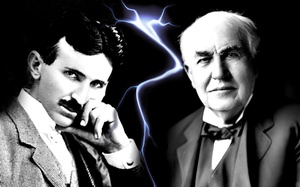A flash of light. A loud bang. A puff of smoke! What does this have to do with photography? Read on as we discover the history of flash photography

Introduction
Since the invention of the camera there has always been the issue of achieving proper light in an image. Any photographer will tell you that light is the most important aspect of the trade. It is what illuminates the subject. Without light you could not see what was being photographed. It's always been very difficult to compensate for poor lighting, especially back when photography was new to the world and the modern day technological capabilities had not even been dreamt of.
After the first camera was invented, early photographers were dependent on sun as their light source. However, this posed many problems and constraints on when and where an image could be taken. As the saying goes, necessity is the mother of invention. This led to the inspiration of the first flash.
Today we will look at what the first flash looked like and how it has developed and advanced over the years.
Flash Photography over the years
Flash Powder
Some have credited the first artificial light used in photography to be in 1839 by L. Ibbetson. This kind of flash was commonly referred to as limelight. Soon after, Flash powder was invented in 1864. It was a mix of an oxidizer and a metallic fuel which generated a quick burst of light that illuminated the subject briefly.
While this advance was certainly a step in the right direction these first flashes were time consuming to make and oftentimes very dangerous to use. Many photographers injured themselves during the process. Something had to change.
Flash Lamps
The next progression was the innovation of the flash lamp or what some call the flash gun. This kind of flash was made by inserting the flash powder into a tray-like contraption. The powder was ignited by a dry cell battery and the result was a flash of light like fireworks on the fourth of July. If the photographer timed it properly, the flash would go off at the same moment the shutter on the camera was opened for the photo to be taken.
Without a doubt this flash was more controlled in its brightness and execution. Unfortunatly, there were still many difficulties that caused the process to be unpredictable and dangerous. The effect of the flash explosion left smoke lingering in the room after the photograph had been taken.

Flash Bulbs
The next advance came in 1930 with the flashbulb. This kind of flash was made with a mixture of magnesium and potassium that combined with oxygen to alight, generating a quick flash. This was great progress as the flash was more compact and contained.
There were drawbacks though. These bulbs were made of glass as you might suspect and as such were very fragile being too hot to touch immediately after use. Oftentimes the bulb would explode during the process. Even if the bulb did not burst it could never be used again. You were forced to either use a flash sparingly or stock up on the bulbs.
Later the casing was changed from glass to plastic reducing mess and risk of injury.
Flash Cube/GE Flip Flash
The next interesting improvement with regards to the flash was the invention of the flash cube or flip flash that came out around the 1960s. Before this time any flash bulb could only be used once as the bulb itself burst during the process
This flash was cube shaped and held four flash bulbs, one at each side. While each bulb could still only be used once the cube itself was good for four photographs as you could rotate to the next bulb after each photo.
Along this time came GE’s version which they named the flip flash. This flash was good for 10 uses and was marketed as, the end of the pale face. Before this time, the flashes used created a harsh light that often gave unrealistic pasty faces on the subjects. GE claimed their flip flash would restore color and warmth to whatever the image was portraying.

Electronic Flash
Finally in the 1970s-1980s the electronic flash came on the picture so to speak and changed the photography world forever. No more would there be a long messy, dangerous process to produce a small amount of light. When a flash is used voltage runs through a tube filled with Xenon gas that ignites an instantaneous flash.
The accuracy of the flash to execute properly at exactly the desired time has drastically improved the flash photography community. Modern days flashes last years, even decades.
Conclusion
The invention and development of the camera flash over the years has drastically opened the scope of what a photographer can accomplish with their images. As exciting as the modern flashes are today there is something special about the vintage flashes that in many respects got the job done. Some of these vintage flashes and variations are still available today!






